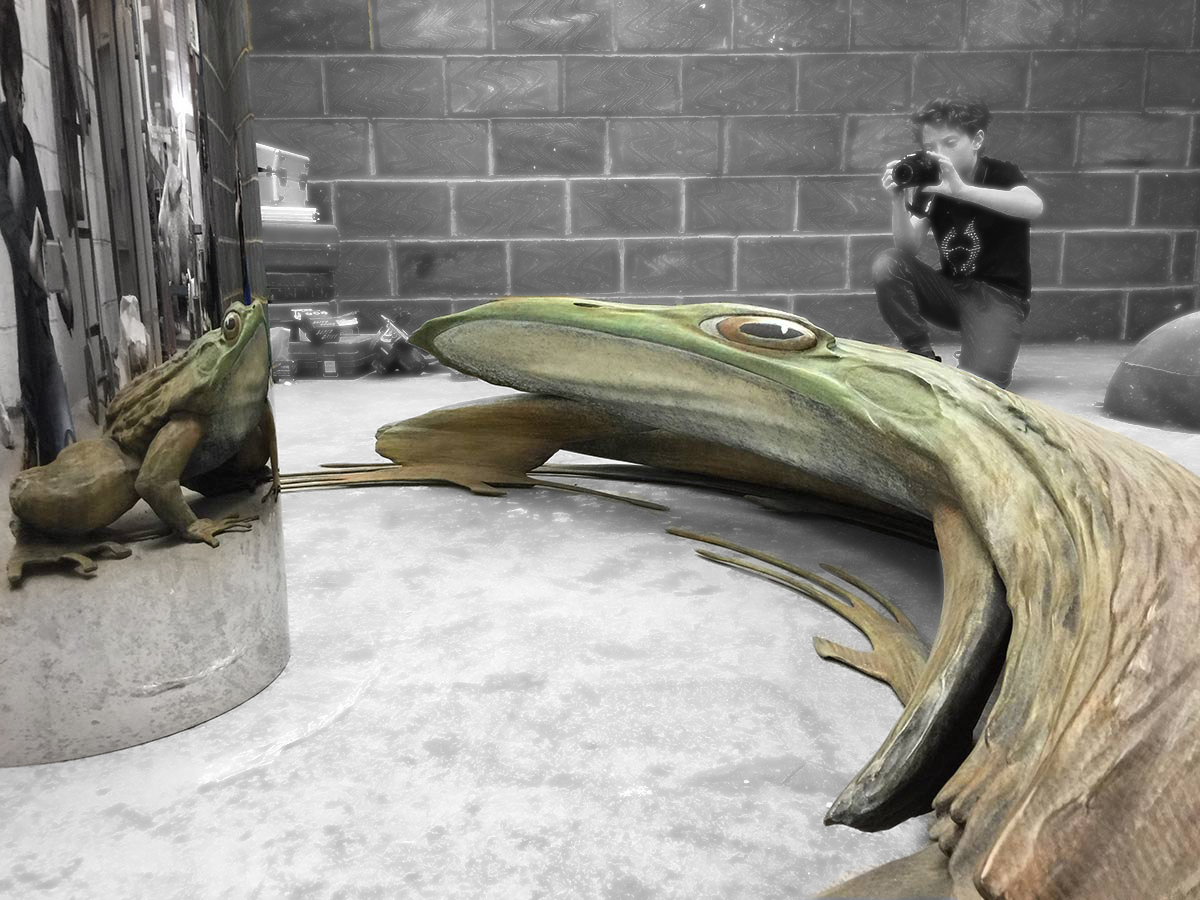Extinction?
2016 | 200 x 200 x 150 cm
Bronze and Steel
In ancient Egypt Frogs symbolised life and fertility. For children through the ages they have been a slippery introduction to the natural world. Frogs represent an order that has weathered over 300 million years to evolve into more than 6,000 singular species.
Beautiful, diverse - and imperilled. Extracts from National Geographic, April 2009
Us humans have assumed our superiority in the age-old battle of species on earth. Our golden time at the top of the evolutionary pyramid is a beautifully fleeting moment. The impact of Chytrid on Frogs is a lesson for us. It is a reminder that we are part of a planet teeming with competitive yet interconnected life forms. Life is a feedback system.
We are witnessing a mass extinction of Amphibia. An exotic fungus called Chytrid is delivering the blow.
Chytrid is now reported on all continents where frogs live - in 43 countries. It survives at elevations from sea level to 20,000 feet. Locally it may be spread by anything from a frog’s leg to a bird’s feather and it has afflicted over 200 species. Gone from the wild are the Costa Rican golden toad, the Panamanian golden frog, the Wyoming toad, the Australian gastric-brooding frog. In a 2007 paper, Australian researcher Lee Berger and colleagues put it this way: “The impact of Chytrid on frogs is the most spectacular loss of vertebrate biodiversity due to disease in recorded history.”

































